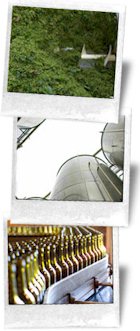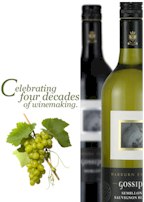


Warburn Estate is located near Griffith in New South Wales, in the centre of the large Riverina grape-growing and agricultural region. Warburn Estate is one of New South Wales most significant wine producers with more than 1000 hectares under vine, a crush capacity of 40,000 tonnes, tank storage for 35 million litres of wine and an annual turnover of $40 million. Warburn Estate proudly remains a private company, maintaining its winemaking independence with the ability to quickly respond to market demands and client needs. The company (formerly Riverina Wines Pty Ltd), is owned by the Sergi family, whose winemaking traditions began in Italy many years ago. Migrants Giuseppe and his son Antonio began to grow grapes on their farm and making wines for his family and friends using old barrels and hand made machinery. He would often sell bulk wine in 200 litre drums, a practice common in Italian cantinas, and would travel extensively throughout Australia to supply his customers.

Sales were successful and demand for wine high so Antonio decided to expand his business and start up a winery operation in 1968 at Tharbogang. The winery became known as House of Sergi’s. In 1972, the winery was granted an official liquor license and formally opened a shop front in an old fibro building on the winery premises. In 1975, a new shop front was built which still exists today. In 1979, the winery was officially named Warburn Wines. The winery continued to expand rapidly.
From the mid-1980’s, many changes took place in the Australian wine industry. The winery recognised the importance of both the domestic and export markets and the need to supply increasing volumes of quality varietal table wines made from such grape varieties as Chardonnay, Shiraz, Cabernet Sauvignon, Merlot and Sauvignon Blanc
In 1989, Tony Sergi recognising this need for a reliable supply of high quality varietal grapes decided to buy surrounding rice farms at Tharbogang for the planting of large scale, highly technical, vineyards. This is now known as Ballingal Estate vineyard and is still owned by the Sergi family. In the same year the Company exported its first wines to United Kingdom. In 1989, Warburn Estate also launched its first cask, Kooba Estate which is still a favourite in many households. In 1994, Warburn Estate’s Warburn brand was launched.

In 1996, the company further invested $14 million in planting the 610 ha in Yenda vineyard which lies 17 kilometres to the east of Tharbogang. The vineyard which uses the latest technology including drip irrigation, EnviroScan soil moisture monitoring, mechanised pruning and harvesting and integrated pest and disease management makes it one of the most technically advanced vineyards in the region.
Domestic sales of Australian wine continued to expand in value rather than volume, reflecting a switch from cask or bulk wine consumption to higher priced bottled wine. As such, Warburn Estate’s restructured management team announced a five-year plan to shift the company’s emphasis from bulk wines to quality bottled and packaged wines. By the end of 1998, the Company was awarded 363 medals and 10 trophies in only 4 years of entering the wine show circuit.
These investments have enhanced wine quality, enabled Warburn Estate to process increased quantities of grapes, meet the increasing export demand for Australian wines and achieve greater economies of scale in production. The Company’s extraordinary range of styles and consumer price points in its portfolio now includes brands such as 1164 Family Reserve, Warburn, Lombard Station, Three Corners, Kanga's Leap, Bushman’s Gully and Gossips.
Further, in May 2003 a $5.5 million bottling line capable of producing up to 10,000 bottles of wine an hour was opened. The totally automated bottling line is part of a four-acre complex that also houses receiving and dispatch facilities, a laboratory and extensive temperature-controlled warehouses for product storage. Warburn Estate wines are now enjoyed in 35 countries around the world. Warburn Estate is fully aware of the critical importance of maintaining Australia’s reputation as a quality producer of export wines. It produces grapes from environmentally sustainable viticulture, strictly in accordance with world’s best practice.
